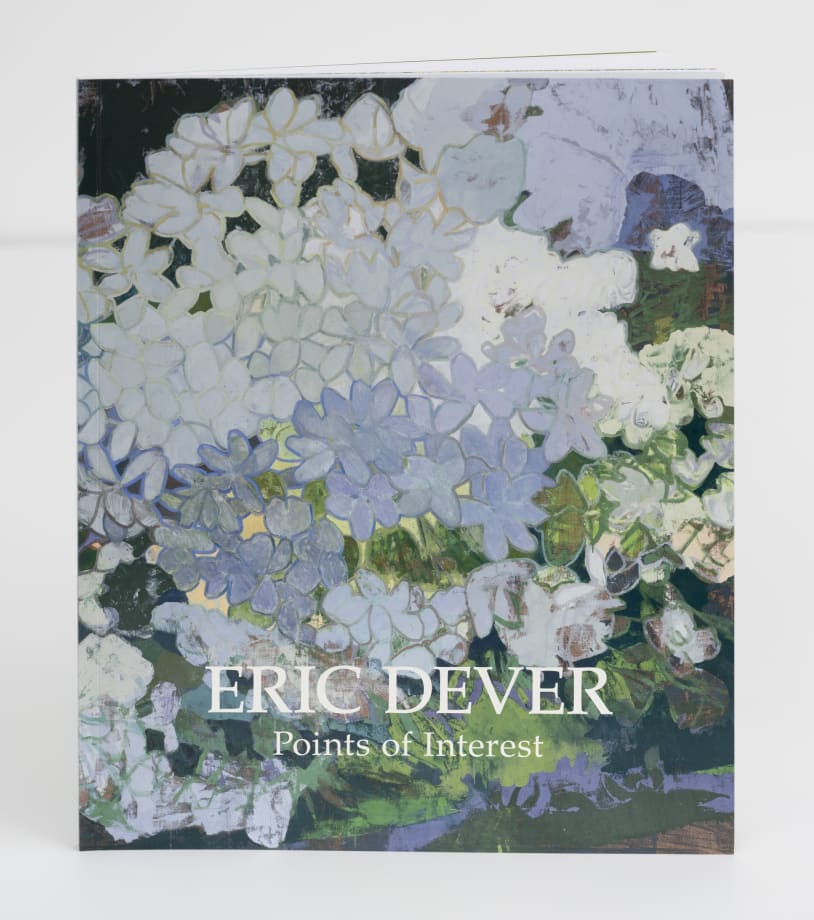Excerpt from Eric Dever: In the Time of Plants
By Dr. Giovanni Aloi, Ph.D.
In Eric Dever’s paintings, time is neither background nor metaphor, it is substance. Just as the garden stages a choreography of slow unfolding, Dever’s canvases are accumulations of temporal gestures, each brushstroke a pulse in the continuum of material and spiritual becomings. The plants he paints—roses, nasturtium, magnolias—do not merely immortalize the gorgeousness of nature; they participate in a visual process where matter and memory grow together, entwined like tendrils. Color, often layered in luminous strata or scraped back to show the weave of the canvas’s coarse linen, functions not as surface decoration but as temporal sediment. The unpainted portions of the canvas breathe with absence marking intervals of reflection, loss, or evoking the elusive work of subterranean life. These voids are not empty; they hold the same potentiality as a wintering bulb or a fallow field.
Painting, for Dever, is a kind of cultivation: an aesthetic tending through which growth, decay, and renewal are made visible in oil and wax. In this way, his work does not merely depict plants but it performs a deep vegetal attunement. The canvas becomes a zone where the temporalities of the garden, the artist, and planetary revolutions can align: poetic detritus, traces of moments lived across multiple root systems, invisibly connected, actual, as well as metaphorical. Here, painting is not a record of time passed, but a field of potentialities anchored by vegetal wisdom.
Essay by Dr. Giovanni Aloi, Ph.D.
Designed by Mark Robinson
Published by Berry Campbell
Printed by GHP Media, Connecticut

